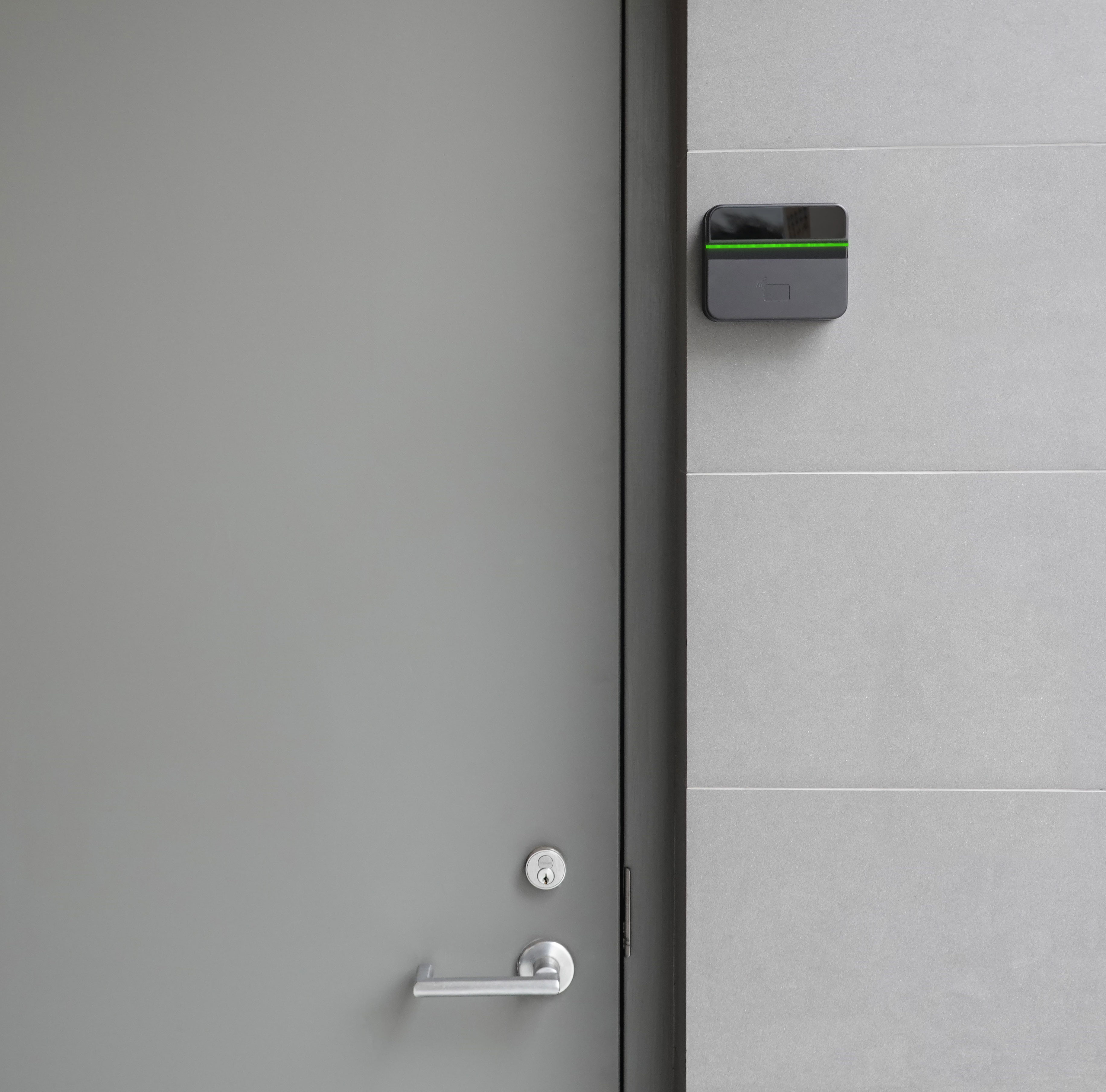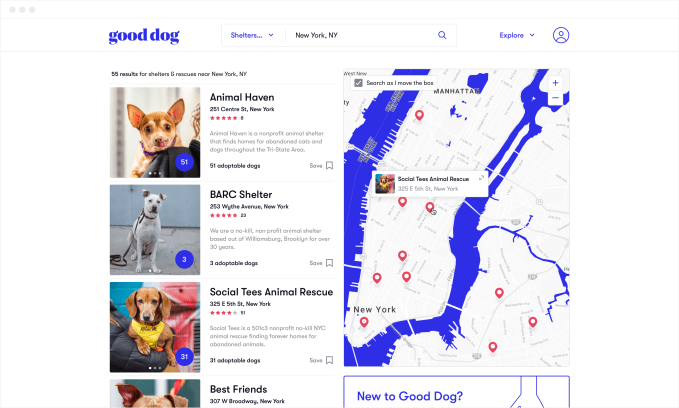Total Pageviews
Wednesday, 3 April 2019
Boston Dynamics acquires a 3D vision startup in bid to put its robots to work
Last week’s Handle video was different than past Boston Dynamics releases. Sure, it showcased the same sort of impressive robotics that have made every video from the company a viral hit, but this one took a very different approach than other recent releases: It put the robot to work.
There were some clear aesthetic differences: the robot appeared a bit larger, and its two arms were swapped out for a single, overhead limb with several suction cups attached. The key differentiator, however, was a relatively mundane setting, in which Handle was moving boxes on and off of pallets and conveyor belts.
Now we’ve got a little more insight into why the company was showcasing its latest creation in a warehouse setting. Today Boston Dynamics announced its first major acquisition: a Bay Area-based startup called Kinema Systems. The company develops 3D imagine solutions for pick-and-place logistics.
The acquisition is telling. Over the last few years, Boston Dynamics was acquired by Alphabet and then sold to SoftBank. Somewhere along the way, it seems clear that the idea of monetization was impressed upon it.
“I think Google planted the seed,” CEO Marc Raibert tells TechCrunch. “And all of the other robotics companies near us were much more focused on applications and product than we were. So we’ve been turning that corner. It’s been a consistent thing. It’s not like we got to SoftBank and they hit us with a hammer and suddenly said, ‘make products.’ They’ve been extremely enthusiastic about our R&D work, too. It feels good to do both.”
Boston Dynamics will take a two-pronged approach, moving forward. The company will continue to push the boundaries of what robotics can do, with products like Atlas, while it looks for real-world applications for other products, including Handle and SpotMini, which it announced last year at TechCrunch’s Robotics event it would begin to commercialize. That product, it seems, is still due out in 2019.
Unlike many other startups in the robotics category, however, Kinema has actually had a product on the market. Kinema describes the Pick as “the world’s first Deep-learning 3D Vision systems for industrial robots.” Notably, the Pick’s suction cup-sporting arm bears more than a passing resemblance to the Handle’s newly redesigned limb.
As part of the deal, the robotic arm is being rebranded as the Boston Dynamics Pick System, as seen in the above video. The company will continue to sell and support the system, meaning that it officially beats the Spot Mini to market at Boston Dynamics’ first commercialized product. The addition of a redesigned Handle appears to find Boston Dynamics looking to build out a logistics ecosystem, something that has the potential to compete with warehouse robotics companies like Fetch or even Amazon Robotics.
“One of the things that’s exciting about the Kinema acquisition is that they’ve already been in the product environment that’s very specific to warehouses and logistics,” Michael Perry, Boston Dynamics’ VP of Business Development tells TechCrunch. “They’ve already been through the process of figuring out what are some of the site-specific issues we need to incorporate into our design. Everything from comms to perception to safety. All of these different factors are now filtering into the design of the robot.”
Kinema’s technology will be utilized for Handle to start. Raibert notes that the wheeled robot is the closest Boston Dynamics has come thus far to developing a purpose-driven commercial robot from the ground up.
“We did a first design of Handle where we were doing what we always do,” says Raibert. “We were trying out a new form and seeing what we can make it do. We were excited because it was so dynamic. But it was really a no-application-in-mind exploration. But then, after we had it and started to think about it, it clearly dovetailed with some logistics thinking we’d been doing. And we did redesign it after that with logistics in mind.”
Another key thing Kinema brings to the table is location. The company’s Mountain View location will serve as Boston Dynamics’ first West Coast offices. “Through this [acquisition],” Perry adds, “we’ll be establishing our presence in the Bay Area for hiring a wide variety of hardware and software specialists.”
via Startups – TechCrunch https://ift.tt/2TSbTrA
Home buying and selling platform Perch raises $220M in debt and equity
Perch, a home-buying and selling platform, has raised $220 million in a combination of equity ($20 million) to fund operations and debt ($200 million) to finance home purchasing. The equity investment was led by existing investors FirstMark Capital, with participation from Accomplice and Juxtapose. Perch declined to disclose the debt lender in the deal.
Perch was founded in September of 2017 by Court Cunningham and Phil DeGisi.
The premise of Perch is to focus on the largest segment of home buyers on the market, which Perch calls “dual trackers.” These buyers are also in the process of selling their current home at the same time.
This is a generally difficult and taxing process that forces people to choose between the uncertainty of a huge investment without having sold their current home or moving into a short-term rental indefinitely until they find the right new home. The alternative is to make an offer to purchase the new home contingent upon the sale of their current home, which tends to be an unattractive proposition for sellers, according to Perch.
Perch solves this for clients by making an offer on their homes that is valid for six months, and then helping them find a new home. Perch also conducts the closing on both homes in the same day.
There is a certain amount of risk associated with this business model considering the fluctuation of the housing market, but that doesn’t seem to be an issue for investors of Perch or their competition. Looking at the way it works now, however, it’s hard to imagine that tech won’t have gotten a strong foothold within the real estate industry over the next few decades.
Which explains the huge influx of cash going to companies the industry calls “iBuyers,” such as RedFin, Zillow, Opendoor and OfferPad. Opendoor recently filed to raise $200 million at a $3.7 billion valuation in February, while OfferPad closed a Series C that brings total equity and debt raised to $975 million.
Perch, however, doesn’t consider itself an iBuyer.
“An iBuyer will buy your house for you at a certain price in an easy and convenient transaction,” said co-founder and CEO Court Cunningham, referencing the offerings of Perch’s competition. “It adds a lot of value, but that’s a feature of a complete offering, not the offering in and of itself.”
In short, Perch wants to tie together the three branches of home buying and selling — closing, title and mortgage — for the 60 percent of the market comprised by “dual trackers.”
For now, Perch is squared away on the closing and title portion of the process, offering e-closing and e-notary to let users complete the transaction from the comfort of their own home. The company plans to offer its own mortgage brokerage service to customers at some point this year, and though it’s not on the roadmap anytime soon, Cunningham said he isn’t closed off to the idea of Perch becoming an underwriter somewhere down the line.
Not only will mortgages add a new revenue stream for Perch, but Cunningham sees the convenience of having everything in one place as a huge opportunity for customer acquisition.
via Startups – TechCrunch https://ift.tt/2OH7UNN
Streaming service Quibi snags Snap and Pandora vet Tom Conrad as chief product officer
Jeffrey Katzenberg’s upcoming mobile streaming service Quibi has added another notable name to its roster of executive talent. The company announced it has hired Tom Conrad, previously VP of product at Snap (maker of Snapchat), and a co-creator of Pandora, where he served as chief technology officer. At Quibi, Conrad will be chief product officer, which will see him leading product, user research and customer support.
The news of Conrad’s hire was first reported by Variety on Monday, which also noted Conrad had served on Quibi’s board since late 2018 and was officially hired as CPO on March 25. He will report to Quibi CEO Meg Whitman in his new role.
Conrad will play a big part in Quibi’s success (or lack thereof, if it doesn’t fare well!), as a significant aspect to the service is to be the app’s mobile design. Unlike modern streaming services like Netflix, Quibi aims to offer short-form, high-quality video cut into smaller pieces for easy consumption on a smartphone. At this year’s SXSW, Whitman explained the Quibi advantage, noting how the technology it’s using will allow the company to do “full-screen video seamlessly from landscape to portrait.”
At Quibi, Conrad’s understanding of streaming services, thanks to his time at Pandora, and apps favored by young users, thanks to his role at Snap, will surely come into play.
 Conrad left Snap in 2018 at a critical time for the popular social app. Its massive redesign had just rolled out, and was destroyed by early user reviews, with the majority giving the update one or two stars when it hit. The design was later rolled back. However, Snap CEO Evan Spiegel was the product decision maker — Conrad was more involved in terms of execution. That experience, however, may have given Conrad insight into what doesn’t work for the young Gen Z crowd, as much as what does.
Conrad left Snap in 2018 at a critical time for the popular social app. Its massive redesign had just rolled out, and was destroyed by early user reviews, with the majority giving the update one or two stars when it hit. The design was later rolled back. However, Snap CEO Evan Spiegel was the product decision maker — Conrad was more involved in terms of execution. That experience, however, may have given Conrad insight into what doesn’t work for the young Gen Z crowd, as much as what does.
The executive also spent a decade at Pandora, as CTO and EVP of Product, which saw him leading the teams that designed, developed and maintained the Pandora apps across platforms — including web, mobile and other consumer electronics devices, as well as automotive. While Quibi is focused on being a mobile streaming app, it’s hard to imagine a streaming service that refuses to ever go cross-platform — especially since the majority of viewing of today’s streaming service viewing takes place on a television. (Even when it’s the streaming service from YouTube.)
With its billion-dollar backing from investors, Quibi has been able to snag several big names for its exec ranks, in addition to its CEO Meg Whitman, and now Conrad.
In March, the company said it landed top CAA agent Jim Toth (married to power producer Reese Witherspoon, by the way). Toth’s clients at CAA included Matthew McConaughey, Robert Downey Jr., Scarlett Johansson, Jamie Foxx, Zoe Saldana, Chris Evans, Salma Hayek, Zooey Deschanel and Neil Patrick Harris.
Quibi also hired former DC and Warner Bros. exec Diane Nelson to run operations. Nelson had served as president of DC Entertainment since 2009, and helped spearhead development of the DC Universe movies and shows.
In addition, the streaming service itself has already been signing big-name talent for its content, including Catherine Hardwicke, Antoine Fuqua, Guillermo del Toro, Sam Raimi and Lena Waithe. It’s also working with Steph Curry’s production company and most recently announced — awkward alert? — a show detailing Snapchat’s founding, focused on Evan Spiegel’s rise.
Image credit: Conrad, via Crunchbase
via Startups – TechCrunch https://ift.tt/2OGfisK
Alcatraz AI is building Face ID for corporate badges
Meet Alcatraz AI, a startup that wants to replace all the badge readers in your office with a Face ID-like camera system. Alcatraz has integrated multiple sensors to identify faces and unlock doors effortlessly.
If you think about it, it’s weird that fingerprint sensors took off on mobile but everybody is still using plastic badges for their offices. Sure, high-security buildings use fingerprint and iris scanners. But it adds too much friction in too many cases.
First, when everybody gets back from their lunch break, it can create a traffic jam if everybody needs to place their finger on a sensor. Second, onboarding new employees would require you to add their biometric information to the system. It can be cumbersome for big companies.
Alcatraz AI promises a faster badging experience with facial authentication. When you join a company, you also get a physical badge. The first few times you use the badge, Alcatraz AI scans your face to create a model for future uses — after a while, you can leave your badge at the office.
The company has built custom hardware with three different sensors that include both traditional RGB sensors and infrared sensors for 3D mapping. Customers pay Alcatraz AI to install those hybrid badge/face readers. After that, companies pay an annual fee in order to use the platform.
Alcatraz AI customers get analytics, real-time notifications and can detect tailgating. This way, if somebody isn’t supposed to go in the secret lab, Alcatraz AI can detect if they’re trying to sneak in by following someone who is authorized to go in there.
The idea is that the ongoing license cost should cover what your company was paying for guards. The startup has raised nearly $6 million from Hardware Club, Ray Stata, JCI Ventures, Ruvento Ventures and Hemi Ventures.

via Startups – TechCrunch https://ift.tt/2UrDtR1
FireHydrant lands $1.5M seed investment to bring order to IT disaster recovery
FireHydrant, an NYC startup, wants to help companies recover from IT disasters more quickly, and understand why they happened — with the goal of preventing similar future scenarios from happening again. Today, the fledgling startup announced a $1.5 million seed investment from Work-Bench, a New York City venture capital firm that invests in early-stage enterprise startups.
In addition to the funding, the company announced it was opening registration for its FireHydrant incident management platform. The product has been designed with Google’s Site Reliability Engineering (SRE) methodology in mind, but company co-founder and CEO Bobby Ross says the tool is designed to help anyone understand the cause of a disaster, regardless of what happened, and whether they practice SRE or not.
“I had been involved in several fire fighting scenarios — from production databases being dropped to Kubernetes upgrades gone wrong — and every incident had a common theme: absolute chaos,” Ross wrote in a blog post announcing the new product.
The product has two main purposes, according to Ross. It helps you figure out what’s happening as you attempt to recover from an ongoing disaster scenario, and once you’ve put out the fire, it lets you do a post-mortem to figure out exactly what happened with the hope of making sure that particular disaster doesn’t happen again.
As Ross describes it, a tool like PagerDuty can alert you that there’s a problem, but FireHydrant lets you figure out what specifically is going wrong and how to solve it. He says that the tool works by analyzing change logs, as a change is often the primary culprit of IT incidents. When you have an incident, FireHydrant will surface that suspected change, so you can check it first.
“We’ll say, hey, you had something change recently in this vicinity where you have an alert going off. There is a high likelihood that this change was actually causing your incident. And we actually bubble that up and mark it as a suspect,” Ross explained.

Screenshot: FireHydrant
Like so many startups, the company developed from a pain point the founders were feeling. The three founders were responsible for solving major outages at companies like Namely, DigitalOcean, CoreOS and Paperless Post.
But the actual idea for the company came about almost accidentally. In 2017, Ross was working on a series of videos and needed a way to explain what he was teaching. “I began writing every line of code with live commentary, and soon FireHydrant started to take the shape of what I envisioned as an SRE while at Namely, and I started to want it more than the video series. 40 hours of screencasts recorded later, I decided to stop recording and focus on the product…,” Ross wrote in the blog post.
Today it integrates with PagerDuty, GitHub and Slack, but the company is just getting started with the three founders, all engineers, working on the product and a handful of beta customers. It is planning to hire more engineers to keep building out the product. It’s early days, but if this tool works as described, it could go a long way toward solving the fire-fighting issues that every company faces at some point.
via Startups – TechCrunch https://ift.tt/2VeJzkH
Pixeom raises $15M for its software-defined edge computing platform
Pixeom, a startup that offers a software-defined edge computing platform to enterprises, today announced that it has raised a $15 million funding round from Intel Capital, National Grid Partners and previous investor Samsung Catalyst Fund. The company plans to use the new funding to expand its go-to-market capacity and invest in product development.
If the Pixeom name sounds familiar, that may be because you remember it as a Raspberry Pi-based personal cloud platform. Indeed, that’s the service the company first launched back in 2014. It quickly pivoted to an enterprise model, though. As Pixeom CEO Sam Nagar told me, that pivot came about after a conversation the company had with Samsung about adopting its product for that company’s needs. In addition, it was also hard to find venture funding. The original Pixeom device allowed users to set up their own personal cloud storage and other applications at home. While there is surely a market for these devices, especially among privacy-conscious tech enthusiasts, it’s not massive, especially as users became more comfortable with storing their data in the cloud. “One of the major drivers [for the pivot] was that it was actually very difficult to get VC funding in an industry where the market trends were all skewing towards the cloud,” Nagar told me.
At the time of its launch, Pixeom also based its technology on OpenStack, the massive open-source project that helps enterprises manage their own data centers, which isn’t exactly known as a service that can easily be run on a single machine, let alone a low-powered one. Today, Pixeom uses containers to ship and manage its software on the edge.
 What sets Pixeom apart from other edge computing platforms is that it can run on commodity hardware. There’s no need to buy a specific hardware configuration to run the software, unlike Microsoft’s Azure Stack or similar services. That makes it significantly more affordable to get started and allows potential customers to reuse some of their existing hardware investments.
What sets Pixeom apart from other edge computing platforms is that it can run on commodity hardware. There’s no need to buy a specific hardware configuration to run the software, unlike Microsoft’s Azure Stack or similar services. That makes it significantly more affordable to get started and allows potential customers to reuse some of their existing hardware investments.
Pixeom brands this capability as “software-defined edge computing” and there is clearly a market for this kind of service. While the company hasn’t made a lot of waves in the press, more than a dozen Fortune 500 companies now use its services. With that, the company now has revenues in the double-digit millions and its software manages more than a million devices worldwide.
As is so often the case in the enterprise software world, these clients don’t want to be named, but Nagar tells me they include one of the world’s largest fast food chains, for example, which uses the Pixeom platform in its stores.
On the software side, Pixeom is relatively cloud agnostic. One nifty feature of the platform is that it is API-compatible with Google Cloud Platform, AWS and Azure and offers an extensive subset of those platforms’ core storage and compute services, including a set of machine learning tools. Pixeom’s implementation may be different, but for an app, the edge endpoint on a Pixeom machine reacts the same way as its equivalent endpoint on AWS, for example.
Until now, Pixeom mostly financed its expansion — and the salary of its more than 90 employees — from its revenue. It only took a small funding round when it first launched the original device (together with a Kickstarter campaign). Technically, this new funding round is part of this, so depending on how you want to look at this, we’re either talking about a very large seed round or a Series A round.
via Startups – TechCrunch https://ift.tt/2CTg94B
Edgybees’s new developer platform brings situational awareness to live video feeds
San Diego-based Edgybees today announced the launch of Argus, its API-based developer platform that makes it easy to add augmented reality features to live video feeds.
The service has long used this capability to run its own drone platform for first responders and enterprise customers, which allows its users to tag and track objects and people in emergency situations, for example, to create better situational awareness for first responders.
I first saw a demo of the service a year ago, when the team walked a group of journalists through a simulated emergency, with live drone footage and an overlay of a street map and the location of ambulances and other emergency personnel. It’s clear how these features could be used in other situations as well, given that few companies have the expertise to combine the video footage, GPS data and other information, including geographic information systems, for their own custom projects.
Indeed, that’s what inspired the team to open up its platform. As the Edgybees team told me during an interview at the Ourcrowd Summit last month, it’s impossible for the company to build a new solution for every vertical that could make use of it. So instead of even trying (though it’ll keep refining its existing products), it’s now opening up its platform.
“The potential for augmented reality beyond the entertainment sector is endless, especially as video becomes an essential medium for organizations relying on drone footage or CCTV,” said Adam Kaplan, CEO and co-founder of Edgybees. “As forward-thinking industries look to make sense of all the data at their fingertips, we’re giving developers a way to tailor our offering and set them up for success.”
In the run-up to today’s launch, the company has already worked with organizations like the PGA to use its software to enhance the live coverage of its golf tournaments.

via Startups – TechCrunch https://ift.tt/2OGyh6v
Good Dog raises $6.7 million to help you find a pup
I’m in the process of looking for a pup friend to bring home with me, but I quickly found that it’s not an easy process. There are tons of places offering up pups, including breeders, shelters and rescues. But it’s not always clear if these places are legitimate.
This is where Good Dog, a startup that just raised $6.7 million from David Tisch’s BoxGroup, Felicis, Slow Ventures and others, can be helpful. Good Dog, launching today, is a marketplace that pre-vets breeders, shelters and rescues and centralizes the dog-search process.
“I’ve been fortunate to be involved with Josh and Lauren since the inception of Good Dog,” Tisch said in a statement. “As I was embarking on my own dog search, it quickly became clear that this was a totally broken process, opening up a massive opportunity within the $72 billion dollar pet market.”
Good Dog co-founders Lauren McDevitt and Josh Wais, former early Jet employees, came up with the idea while they were looking for a pup to add to their family. What was most troubling in their search, McDevitt told TechCrunch, was that there was a lack of standard and expertise.
“It was hard to determine the good from the bad,” she said. “It was hard to identify who was doing the right thing. Some put dogs in harm’s way and made it hard for well-intentioned people to find the right dog.”
Good Dog focuses on educating people about what it takes to take care of a dog, as well as what kind of dog may be best for them. The startup then enables those looking for dogs to explore profiles from trusted, vetted providers and then facilitates connections.
You can search by location and shelter, or simply by breed.

“Our mission is to help connect good with good to weed out the bad,” Wais said. “The industry is broken and we see an opportunity in connecting prospective dog owners with responsible sources to help weed out the irresponsible sources.”
So far, Good Dog showcases pups from more than 1,000 responsible sources across the U.S. Before adding a source to the platform, Good Dog’s team uses its own proprietary standards to ensure the source cares for its dogs in a way its advisory team has determined is acceptable. That entails making sure the source cares for each dog’s respective health needs, socializes them properly and houses them in safe environments.
Good Dog makes money by charging a fee (around $100) once you’ve decided to go ahead and purchase a dog. Good Dog does not charge breeders, shelters or rescues. It’s worth noting that providers also cannot pay to be featured on Good Dog.
via Startups – TechCrunch https://ift.tt/2Ua6KjL
Elvie raises $42M to become the go-to destination for women’s health
Elvie, the developer of femtech hardware including a silent wearable breast pump and a smart pelvic floor exerciser, is one of the boldest startups around.
Led by co-founder and chief executive officer Tania Boler, the London-based business has successfully infiltrated the bro-y community of venture capitalists, which has historically shied away from the “unrelatable” and “niche” sector that is women’s health. Of course, that sector isn’t niche at all, the global women’s health market is expected to be worth $51.3 billion by 2025, but investors have only recently begun to accept that reality.
Elvie is today announcing its third private financing, a $42 million Series B led by IPGL to support the release of four additional women’s health products. Octopus Ventures and Impact Ventures U.K. have also participated in the round.
Six-year-old Elvie is led by Boler and co-founder Alexander Asseily, a hardware vet and co-founder of the consumer electronics business Jawbone, which despite its many struggles, managed to get VCs to cough up hundreds of millions of dollars before it folded. Boler’s expertise in the space — she has a Ph.D. in sexual health — and Asseily’s hardware prowess have undoubtedly lured investors, as has Elvie’s breast pump, launched in September, which boasts a waitlist of thousands of women.
Under Boler’s fearless leadership, Elvie has raised nearly $50 million and started a much-needed conversation around women’s issues, like pelvic floor health and public breastfeeding.
[gallery size="full" type="slideshow" ids="1805635,1805639,1805637,1805638"]
Elvie’s latest attempt to change the narrative around public breastfeeding involved five giant inflatable breasts being placed across London’s skyline. On Mother’s Day in the U.K., March 31, Elvie’s #FreeTheFeed campaign attempted to fight the stigma around breastfeeding and pumping in public in what the startup said was “an invitation to stand with all those women that have felt shamed or confined when breastfeeding or pumping.”
“We know the giant boobs will raise a few eyebrows, but we want to make sure no one overlooks the way that this stigma has been used to repress women,” Boler said in a statement.
“When you create a new category, you have to educate the market and you have to change the conversation,” Boler added in an interview with TechCrunch earlier this week.
Elvie’s long-term plan is to develop products supportive of women at every stage in her life, whether that be pre-natal, menopausal or otherwise, and to become a one-stop shop for women’s health. Its debut product, the app-connected Kegel trainer, helps women strengthen their pelvic floor with five-minute workouts and real-time biofeedback. Its second product, the silent wearable breast pump, is similarly app-connected and monitors milk volume in real-time, tracks pumping history for each breast and can be operated remotely. Both have been category-defining triumphs.
The company will use its latest investment to continue R&D on upcoming products and to build brand awareness and distribution for the Elvie pump and the Elvie Kegel trainer across the U.S., Canada, Europe and Asia.
Elvie’s round follows a number of new investments in the femtech space. Today, another women’s health startup, Cora, closed a $7.5 million investment. Another, NextGen Jane, raised $9 million in a round announced yesterday to use blood wrung from tampons to possibly discover early markers of endometriosis.
“I think it’s really an exciting moment for femtech,” Boler said. “The tech sector is waking up to the importance of the female consumer.”
via Startups – TechCrunch https://ift.tt/2OHfx6P
Sqreen raises $14 million for its application security management service
Sqreen has raised a Series A round of $14 million. Greylock Partners is leading the round, existing investors Y Combinator, Alven and Point Nine are also participating.
The startup wants to improve security when it comes to web applications and cloud infrastructure. Sqreen doesn’t require you to alter your code or put up a firewall. It works a bit like performance management companies, such as New Relic, AppDynamics or DataDog.
“Many strategic tasks are now handled with an engineer-driven approach — performance, deployment, log monitoring, error management… but not security,” co-founder and CEO Pierre Betouin told me.
If you don’t have enough time or money to build a team of security experts, Sqreen can already help you identify and fix many issues in your application. First, you install a library package on your server and add a few lines of code to require the Sqreen module in your application.

This way, Sqreen’s microagents are always running and monitoring your app. You can identify security holes in the Sqreen dashboard. You can also optionally activate real-time protection modules.
And Sqreen has expanded its service and now handles more than weaknesses than before. In addition to its self-protection module against SQL and XSS injections, Sqreen now provides an in-app Web Application Firewall, protections against account takeovers, bad bots, etc.
That’s why Sqreen is calling its platform Application Security Management as you can activate and deactivate modules depending on your needs. Sqreen gives you an overview of your cloud infrastructure so that you stay on top of security.
Sqreen currently works with web applications in Node.JS, Ruby, PHP, Python, Java and Go. There’s a small CPU overhead once you deploy Sqreen. Clients now include Le Monde, Algolia, Y Combinator and Y Combinator.

via Startups – TechCrunch https://ift.tt/2HRjhC7
Online catering marketplace ezCater gets another $150M at a $1.25B valuation
In 2007, Stefania Mallett and Briscoe Rodgers conceived of ezCater, an online marketplace for business catering, and began building the company in Mallet’s Boston home, mostly at her kitchen table.
Recently, sitting at that same table, Mallett negotiated with Brad Twohig of Lightspeed Venture Partners the final terms of a $150 million Series D-1 at a $1.25 billion valuation. Lightspeed, alongside GIC, co-led the round, with participation from Light Street Capital, Wellington Management, ICONIQ Capital and Quadrille Capital.
“Raising money or getting to unicorn status, it’s all nice validation but that’s not the purpose, the purpose of being in business is to grow a very successful company with happy customers and happy employees,” Mallett, ezCater’s chief executive officer, told TechCrunch. “We are going to have cupcakes with unicorns on them. That will take us about a half hour, then we will get back to work.”

EzCater co-founder and CEO Stefania Mallett
Mallett compares ezCater to Expedia. The travel company doesn’t own and operate hotels, nor do they create them. EzCater, similarly, works with 60,500 restaurants and caterers around the U.S. to fulfill orders, but at no point do they work directly with food nor make any deliveries themselves.
Since its inception, the ezCater marketplace has grown considerably, expanding 100 percent annually for the last eight years, Mallett tells us. Though, like most unicorns, ezCater isn’t profitable yet.
Both Mallett and Rodgers are software industry veterans, establishing engineering careers prior to tackling business catering. The pair bootstrapped the company until 2011, when they secured a small Series A investment of $2.7 million. That same year, U.S. foodtech startups raised $176 million, per PitchBook. EzCater would go on to raise more than $300 million in equity funding, including its latest round, and VC interest in foodtech would explode. Already this year, U.S. foodtech startups have brought in $626 million after pulling in a whopping $5 billion in 2018.
EzCater has benefited from this boom. The company raised a $100 million Series D just 10 months ago.
“We really didn’t need the money, we have quite a lot of money in the bank from the last round,” Mallett said. “There was so much talk of a funding winter and a recession coming so we said maybe we should try to raise money and then people jumped on it so we thought OK, why not? If there is a funding winter, we’re set; if not, well, we are still set.”
The investment comes hot off the heels of ezCater’s acquisition of Monkey Group, a cloud platform for take-out, delivery and catering. Mallett declined to disclose terms of the deal but said the partnership makes ezCater the indisputable market leader in catering management software. The company will use its recently expanded war chest to accelerate its international expansion and, potentially, continue its M&A streak. As for the future, an initial public offering is amongst the possibilities.
“We certainly are considering it,” Mallett said. “As we’ve grown, we’ve become more sophisticated and mature; that puts us in a good position to continue operating as a successful standalone company or be acquired by a public company or go public if we see an opportunity to do that. We are not wedded to any of these outcomes.”
via Startups – TechCrunch https://ift.tt/2CPk6HA
German fintech company builder Finleap acquires SME banking provider Penta
Just since months after raising $7 million in Series A funding, German SME banking provider Penta has been acquired by Finleap. Terms of the deal remain undisclosed, although I understand that the acquisition sees Finleap and Penta’s co-founders becoming the challenger bank’s sole owners, with all other shareholders exiting.
Launched in late 2014 by Hitfox Group and Ramin Niroumand, Finleap has developed 16 ventures from scratch, as well as acquiring a number of fintechs. Companies in its portfolio include banking platform solarisBank, of which Penta is a customer, and digital insurer Element, to name just two.
Penta says that becoming part of the Finleap “ecosystem” will help the SME banking provider increase the speed at which it expands internationally. This will include launching in Italy in partnership with Beesy, a Finleap portfolio company focusing on digital business banking for freelancers.
“Penta has a great product and a great team, serving especially the digital industry, which matches perfectly [with] Finleap’s focus on vertical banking,” FinLeap co-founder Niroumand tells me. “Additionally, with Pair Finance for digital debt collection and Perseus for cybersecurity, there are already two other players in the Finleap ecosystem offering services to a similar customer group like Penta, so they form a real value chain for the digital industry”.
To date, Penta counts over 5,500 digital businesses as customers, such as AirHelp, bepro11 and Global Digital Women. The banking fintech set out to fix SME banking, enabling customers to open a business bank account in just a few minutes online. Other features include a real-time overview of a business’ finances, debit cards with individual limits for employees, and accounting integration. Over the next year, Penta plans to add direct debits, SME loans, international transfers and more.
“The decision to go with Finleap was a strategic one,” says Penta co-founder Luka Ivicevic. “By becoming part of the Finleap ecosystem, we’re able to accelerate our growth inside and outside of Germany at an unprecedented pace”.
Meanwhile, Niroumand says Penta will remain an independent business and that Finleap will not be part of the operational management of Penta. However, Penta will be able to benefit from Finleap’s resources and expertise. “Penta will be able to get strong support from Finleap’s team of top talents,” he says.
“For example to accelerate their hiring efforts and to solve back-office tasks, so that the Penta team can focus completely on the development of the product and new features, like loans and direct debits. In terms of funding, Penta can also tap into Finleap’s network of corporate financial partners”.
Adds Ivicevic: “This is not an exit, but the next step of our growth, Finleap is the right partner for it”.
via Startups – TechCrunch https://ift.tt/2UpCkta
Lyft’s stock has a blue Monday as shares slide after public debut
Today, investors took off their rose-colored glasses (and pink-colored mustaches) and looked at Lyft’s shares with fresh eyes after Friday’s ebullient debut.
And — judging by the company’s share price at the end of the day — what they saw wasn’t exactly to their liking.
Lyft’s shares suffered a pretty blue Monday in trading on the Nasdaq stock exchange today, closing down $9.28 (or 11.85 percent).
Once trading after the pink confetti was swept up off the floor, analysts and investors had a different story to tell about one of the first unicorns to make its public debut.
Part of the reason for the company’s share price tumble was a report from Guggenheim Partners analyst Jake Fuller, which voiced skepticism about the ride-hailing company’s path to profitability.
Lyft’s financial picture has always been challenged. That was clear from the moment it filed its financial documents with the Securities and Exchange Commission before its public debut.
As TechCrunch wrote at the time:
According to the filing, Lyft recorded $2.2 billion in revenue in 2018, more than double the $1 billion recorded in 2017. Meanwhile, losses have been growing considerably. The company posted a net loss of $911 million on the $2.2 billion in revenue and a $688 million loss on 2017’s $1 billion.
The analysis from Fuller simply makes clear that Lyft’s purported path to profitability is dependent on a number of steps that could prove very difficult for the company to execute.
“We see four paths to profitability: cut driver pay, turn off incentives, reduce insurance costs or shift to self-driving cars,” Fuller is quoted by MarketWatch as writing. “The first two would be tough in a highly competitive category, the third might not be enough by itself and the fourth is likely 10 years out.”
via Startups – TechCrunch https://ift.tt/2JY728R
A startup trying to detect endometriosis through ‘smart tampons’ just landed $9 million in Series A funding
There’s no shortage of so-called femtech startups raising money right now, and little wonder why.
Aside from the growing market opportunity — the global fertility services market is expected to reach $31 billion by 2023, says the consultancy Allied Market Research, nearly double where it stood in 2016 — more women are clamoring for information about their reproductive health, and 15-minute doctor visits aren’t doing the trick.
The newest recipient of venture dollars: NextGen Jane, a 4.5-year-old, Oakland, Calif.-based company that’s hoping to use blood wrung from tampons to find early markers of endometriosis and, later, if all goes well, cervical cancer and other disorders.
The company disclosed just today that it has secured $9 million in Series A funding led by Material Impact, a new fund focused on materials technology that we reported on last November. Other participants in the round include Access Industries, Viking Global Investors, Liminal Ventures and numerous notable angels, including PhDs from Harvard Medical School and Stanford University.
Its approach is far more palatable than the option women have long suffered, which is to have a small camera inserted into their pelvic cavity in search of endometrial cells. (Note: Women typically wind up in this position only after enduring bewildering pain that drives them to see their doctors.) The idea with NextGen Jane instead is for a custom-made tampon to be worn for roughly two hours, placed inside a test tube as part of a home kit and sent to a lab for further analysis.
Of course, it needs to work first, and the technology hasn’t been approved by the FDA. In fact, it hasn’t been proven at all.
The funding could, potentially, make the difference. In an interview with Technology Review last month, NextGen CEO and co-founder Ridhi Tariyal said that a clinical trial is designed and ready to go, but that NextGen Jane needed capital to run a trial on roughly 800 women in order to establish the diagnostic efficacy of menstrual blood.
With funding, she’d said, it would take the company about two years to collect a meaningful amount of data.
Reproductive specialists seem torn generally on the trend of startups producing home kits aimed at helping women understand their fertility. While they see some value in the information they provide, they also fear that even home kits proven to accomplish their intended goal, such as measuring anti-Müllerian hormone, or AMH, may confuse women as much as they help them.
NextGen Jane had previously raised $2.3 million in funding.
TechCrunch has been reporting on the broader uptick in femtech investing in recent weeks. You can find a deeper dive regarding who has raised what lately and why right here.
via Startups – TechCrunch https://ift.tt/2Ud2Kz9
ManoMano raises $125 million for its home improvement e-commerce platform
French startup ManoMano is raising a new funding round of $125 million (€110 million). The company operates an e-commerce website and marketplace focused on home improvement and gardening.
ManoMano is part of the great unbundling of general e-commerce platforms. By focusing on a vertical in particular, the company can provide a large product offering, competitive prices and better customer service.
The platform generated $450 million (€400 million) in gross merchandise value last year. France is still its main market, but the company plans to become the dominant home improvement platform in Europe.
According to an interview in JDN, ManoMano plans to take a page out of Amazon’s playbook and expand its Mano Fulfillment service. As the name suggests, ManoMano plans to manage products from third-party retailers and take care of logistics.
More recently, ManoMano launched a B2B service with a few advantages for professional workers.
Eurazeo Growth, Aglaé Ventures and Bpifrance are participating in today’s funding round, with existing investors CM-CIC, Partech, Piton and General Atlantic also participating.
via Startups – TechCrunch https://ift.tt/2WEFMha
Bringing affiliate marketing and outsourced customer acquisition to Brazil nets Escale $22.6 million
Despite not being Brazilian and having their first exposure to the country only a few years ago, the two co-founders of Escale have managed to raise $22.6 million for their company, which provides customer acquisition services to companies in telecommunications and healthcare across Brazil.
Their secret? A knowledge of search engine optimization technologies honed through side businesses the two ran back in the United States.
The state of online marketing and digital sales was so woefully bad in Brazil that co-founders Matthew Kligerman and Ken Diamond had a green field in front of them on which to build Brazil’s first true online customer acquisition service, according to Diamond.
“We fell in love with Brazil for its warm culture and natural beauty, but as consumers, we had terrible experiences acquiring the most fundamental products and services for our new lives: internet, cell phone plans, health insurance and basic banking needs,” Kligerman said in a statement.
The company’s largest customer, according to Diamond, is NET, the Brazilian cable and telecom operator. NET was the first company to sign on for Escale’s customer acquisition services, but the company’s roster of clients now includes some of Brazil’s largest companies, including Bradesco, Sul America, Claro, GNDI and Amil.
It’s that marquee client list that attracted QED Investors and Invus Opportunities to co-lead the $22.6 million round that Escale just closed. The company’s previous investors, Kaszek Ventures, Rocket Internet’s GFC and Redpoint e.Ventures, also participated in the funding.
Latin America is in the throes of a startup renaissance at the moment, with Brazilian companies like Nubank and iFood and the Colombian company Rappi reaching billion-dollar valuations. Meanwhile investors are committing more capital to the region. SoftBank, for instance, is committing $5 billion to a new Latin American-focused fund.
With the new funding, Escale intends to move deeper into the development of customer acquisition platforms across verticals like consumer finance, insurance and education with comparison shopping sites and informational services (à la Credit Karma in the U.S.).
“With millions of web and cloud voice interactions every month, Escale can transform each of those interactions into data points, and continually improve its proprietary acquisition platform, ‘EscaleOS,’ to create highly-intelligent, customized marketing and sales funnels, helping consumers at the right moment connect with the products and services they need,” says Nicolas Berman, a partner at Kaszek Ventures. “The more consumer interactions they have, the faster Escale’s data flywheel spins.”
via Startups – TechCrunch https://ift.tt/2V58kzQ
Jio Health combines online and offline healthcare in Southeast Asia, starting in Vietnam
The internet is often lauded for the potential to increase the impact of a range of primary services in emerging markets, including education, commerce, banking and healthcare. While many of those platforms are now being built, a few are finding that a hybrid approach combining online and offline is advantageous.
That’s exactly what Jio Health, a “full stack” (forgive the phrase) healthcare startup is bringing to consumers in Southeast Asia, starting in Vietnam.
The company started as a U.S.-based venture that worked with healthcare providers around the “Obamacare” initiative, before sensing the opportunity overseas and relocating to Vietnam, the Southeast Asian market of 95 million people and a fast-growing young population.
Today, it operates an online healthcare app and a physical facility in Saigon; it also has licenses for prescriptions and over the counter drug sales. The serviced launched nearly a year ago; already the company has some 130 staff, including 70 caregivers — including doctors — and a tech team of 30.
The idea is to offer services digitally, but also provide a physical location for when it is needed. Therein, the company ensures that “every element of that journey” is controlled and of the required standard; that’s in contrast to services that partner with hospitals or other care centers.
The scope of Jio Health’s services range from pediatrics to primary care, chronic disease management and ancillary services, which will soon cover areas like eye care, dermatology and cancer.
“Our initial research [before moving] found that healthcare in Vietnam was unlike the U.S.,” Raghu Rai, founder and CEO of Jio Health, told TechCrunch in an interview. “Spending is primarily driven by the consumer (out of pocket) and there’s no real digital infrastructure to speak of.”
Rai — a U.S. citizen — said doctors typically “have minutes per patient” and get through “hundreds” of consultations in every morning shift. That gave him an idea to make things more efficient.
“We can probably address north of 80 percent of consumers’ health needs,” he said of Jio Health,” but we also have referral partnerships with certain hospitals.”

Raghu Rai is CEO and founder of Jio Health
The process begins when a consumer downloads the Jio Health app and inputs primary information. A representative is then dispatched to visit the consumer in person, potentially within “hours” of the submission of information, according to Rai.
He believes that Jio Health can save its users money and time by using remote consultancy for many diagnoses. The company also works with health insurance companies for areas like annual checkups, and Rai said that a number of global corporations offer Jio Health among the provider options for their staff; but they’re not exclusive.
This week, Jio Health announced that it has closed a $5 million Series A funding from Southeast Asia’s Monk’s Hill Ventures. Rai said the company plans to use the capital for expansion. In particular, he said, the company is adding new care categories this month — including eye care and dermatology — and it is working toward expanding its brand through marketing.
Further down the line, Rai said the company hopes to expand to Hanoi before the end of this year. While there is interest in moving into other markets within Southeast Asia, that isn’t about to happen soon.
“We have begun to investigate other markets, but at this point feel the market in Vietnam is substantial in itself,” he told TechCrunch. “It’s very plausible that we’d be looking at international expansion plans in 2020… we’re going to be focused on Southeast Asia.”
via Startups – TechCrunch https://ift.tt/2HRZ1jG
Financial Literacy
from Resources » Surfnetkids https://ift.tt/2OHExe5
via IFTTT
Vezo 360-degree dash cam also gives drowsy drivers a nudge

Drowsy drivers kill, which is why we've seen a number of technological solutions take aim at the problem, from established automakers and idealistic startups alike. Currently on Kickstarter, the Vezo 360 is the latest to roll onto the scene and serves as a 360-degree dash cam first and foremost, but with the ability to pick up on tired drivers and give them a nudge if need be.
.. Continue Reading Vezo 360-degree dash cam also gives drowsy drivers a nudgeCategory: Automotive
Tags:
from New Atlas (Gizmag) https://ift.tt/2HX89Ud
via IFTTT
Severe flu could cause taste buds to grow in your lungs

While most of us shake off the flu after a week or two, in more extreme cases the virus has been known to actually reshape the structure of the lungs. Now, researchers at the University of Pennsylvania have discovered a major part of that restructuring that until now had gone unnoticed – "taste bud cells" seem to grow in the lungs after a severe case of the flu.
.. Continue Reading Severe flu could cause taste buds to grow in your lungsCategory: Biology
Tags:
from New Atlas (Gizmag) https://ift.tt/2VgCAI2
via IFTTT
Simple kit turns small vans or crossovers into cozy micro campervans for under $750

We were just getting used to covering mini-campervans, and now a company called Simple has gone and downsized things to what it calls a "micro camper van." The base vans aren't any more compact than the minis we've looked at, but Simple's conversion kits are about as lightweight, basic and affordable as it gets, earning the "micro" title. The solo and two-person camper kits install in minutes without any permanent modifications, carving out a functional living space inside van or SUV while adding less than 100 lb (45 kg), and costing less than some tents. In short, van life made Simple.
.. Continue Reading Simple kit turns small vans or crossovers into cozy micro campervans for under $750Category: Outdoors
Tags:
from New Atlas (Gizmag) https://ift.tt/2TT0zM7
via IFTTT
3D-printed transparent skull could offer clearer views of Alzheimer's at work

With promising drugs falling at the final hurdles and its causes still the source of huge mystery, there is a lot to learn about Alzheimer's and how it can be better treated. Scientists now have an inventive new tool with which to look into such matters, in the form of a transparent skull that allows them to peer into the heads of mice to see how the disease or brain injuries can affect various parts of brain.
.. Continue Reading 3D-printed transparent skull could offer clearer views of Alzheimer's at workCategory: Medical
Tags:
from New Atlas (Gizmag) https://ift.tt/2UhXWIV
via IFTTT
NASA tests Europa Clipper antenna for future Jupiter moon mission

A key element of NASA's Europa Clipper is being put through its paces as a prototype of the deep-space probe's High-Gain Antenna (HGA) undergoes testing at the space agency's Experimental Test Range (ETR) at the Langley Research Center in Hampton, Virginia. The HGA will be used to keep the Clipper in contact with mission control as it conducts a series of flybys of Jupiter's moon Europa.
.. Continue Reading NASA tests Europa Clipper antenna for future Jupiter moon missionCategory: Space
Tags:
from New Atlas (Gizmag) https://ift.tt/2I6F4VL
via IFTTT
Scientists witness lizard lay eggs and give live birth in same litter

Normally, animals reproduce by either laying eggs or giving birth to live young, but an Australian species of lizard can apparently do both in the same pregnancy. Scientists at the University of Sydney witnessed a three-toed skink lay three eggs before going on to later give birth to a live baby, an event that had never been observed in any vertebrate species before.
.. Continue Reading Scientists witness lizard lay eggs and give live birth in same litterCategory: Biology
Tags:
from New Atlas (Gizmag) https://ift.tt/2FSKxOu
via IFTTT
MIT and NASA develop auto-morphing "metamaterial" wing made of hundreds of tiny parts

A team of researchers led by NASA and MIT have come up with a radical new wing design that is not only much lighter than conventional wings, but also has the potential to automatically reconfigure itself to meet the flight conditions of the moment. Built out of tiny, identical polymer tiles connected by struts, the new mechanical "metamaterial" promises faster, cheaper aircraft production and maintenance.
.. Continue Reading MIT and NASA develop auto-morphing "metamaterial" wing made of hundreds of tiny partsCategory: Aircraft
Tags:
from New Atlas (Gizmag) https://ift.tt/2OEuwP3
via IFTTT
Ford readies all-electric Transit van for a 2021 European debut

Ford's trusty Transit van is getting an all-electric makeover, with the automaker revealing plans for a zero-emissions model at an event in Amsterdam today. The upcoming Transit was announced alongside other upcoming electrified vans from Ford, all hoped to help clear the smog in busy urban centers.
.. Continue Reading Ford readies all-electric Transit van for a 2021 European debutCategory: Automotive
Tags:
from New Atlas (Gizmag) https://ift.tt/2HVjswj
via IFTTT
Bluetooth metal detector uses your smartphone to do its thinking

Although smartphones can perform many tasks on their own, they're also able to make devices such as drones, robots and cameras cheaper and/or more capable by acting as their "brains." One of the latest gadgets to receive such a treatment is the humble – and potentially treasure-finding – metal detector.
.. Continue Reading Bluetooth metal detector uses your smartphone to do its thinkingCategory: Electronics
Tags:
from New Atlas (Gizmag) https://ift.tt/2TTOSVe
via IFTTT
Future violinists may be trained by AI

If you're training to be a concert violinist, you don't want your technique to be merely "good enough." A new computer system may soon be able to help, as it uses artificial intelligence (AI) to identify a user's bow technique, and could perhaps even tell them how to improve their performance.
.. Continue Reading Future violinists may be trained by AICategory: Good Thinking
Tags:
from New Atlas (Gizmag) https://ift.tt/2WJnNWN
via IFTTT
Skinmade kiosks produce client-specific face cream on demand

Like a lot of things, skincare products work best if they're tailored to individual users. Unfortunately, though, such bespoke items tend to be expensive. German startup Skinmade is out to change that, with kiosks that mix and dispense relatively affordable skin creams that are based on each client's unique needs.
.. Continue Reading Skinmade kiosks produce client-specific face cream on demandCategory: Health & Wellbeing
Tags:
from New Atlas (Gizmag) https://ift.tt/2OGIbEY
via IFTTT
Delfast gets down to business with fleet-ready Partner e-bike
Back in 2017, Delfast launched an e-bike claimed capable of 236 miles of electric range per charge. The Prime was then used to snag the Guinness World Record for the greatest distance by electric bicycle on a single charge. And now the company has reworked that model to create the Partner, which is smarter and lighter and aimed squarely at small-to-medium businesses.
.. Continue Reading Delfast gets down to business with fleet-ready Partner e-bikeCategory: Bicycles
Tags:
from New Atlas (Gizmag) https://ift.tt/2Vf0dAH
via IFTTT
